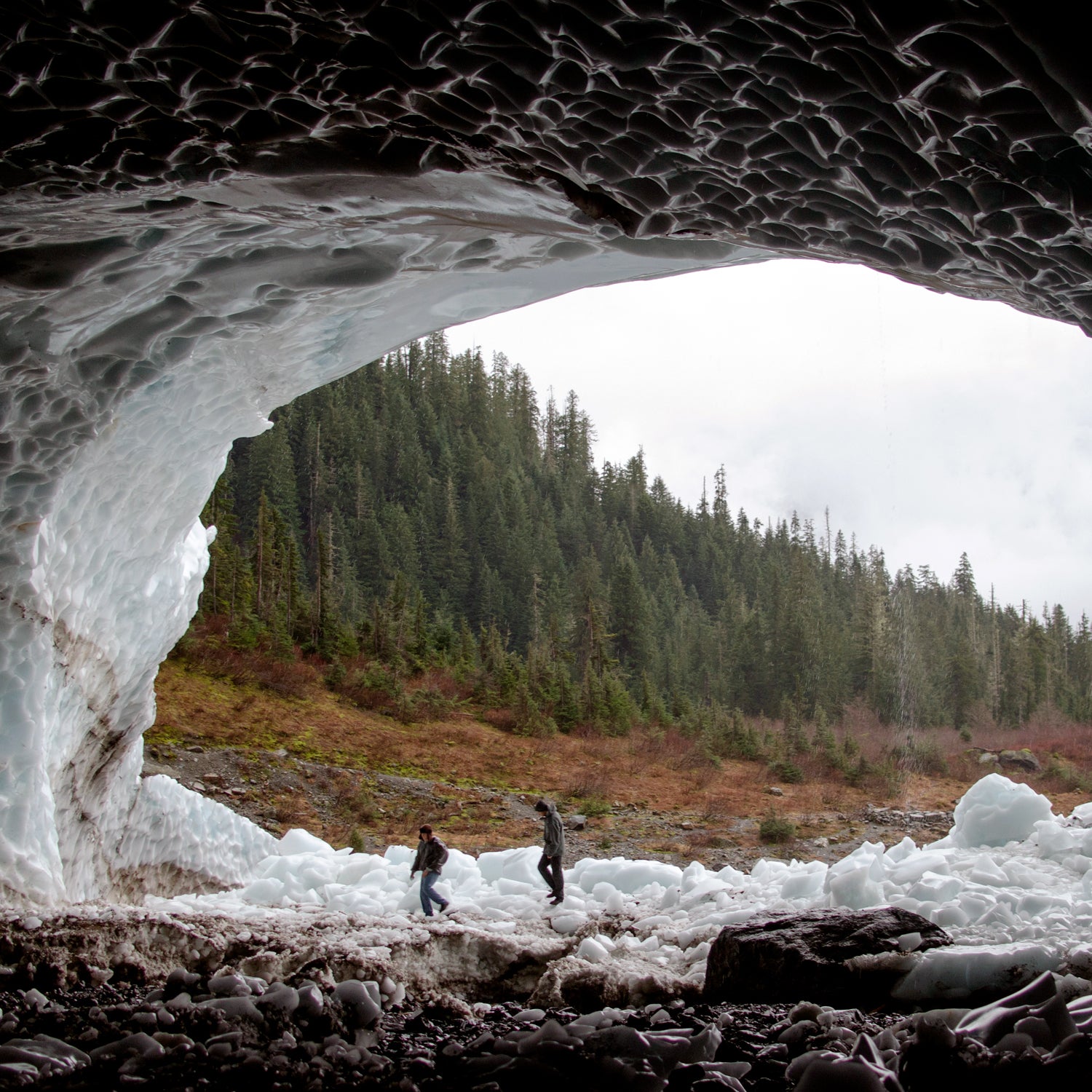Ice caves are spectacular natural attractions, but they’re not exactly known for being safe places to hang out. These caverns are, after all, formed by melting, shifting swaths of snow and ice that can collapse or crumble without warning. “Deceivingly friendly” is how Seattle-based Mount Everest guide David Morton describes them.
On Monday, hikers at the Big Four Ice Caves in Washington found out just how volatile these environments can be, and with tragic results. A major collapse in one of the caves left a 34-year-old woman dead and five people injured, including two children and one man in critical condition. Those people, and several others, entered the caves despite warning signs outside. The cause of the collapse can largely be chocked up to unseasonably warm temperatures that has destabilized the caves. “We’re looking at conditions that we usually don’t see until September,” says Aleta Eng, partnership specialist for Mt. Baker-Snoqualmie National Forest.
Warm weather notwithstanding, these caves are dangerous. This isn’t the first time there’s been an accident at the Big Four. In 2010, 11-year-old Grace Tam was killed by a boulder of falling ice just outside the caves. Now, a commemorating Tam’s life—and warning others of the dangers—is posted right outside the caves. Other signs on the one-mile trail to the caves also warn of falling ice and instruct people not to get too close to the caves, much less enter them. On the same day the accident happened, went live on YouTube showing another collapse at the very front of the caves.
“When you’re trying to figure out if an area is safe, you have to look at the history,” says Gordon Janow, Director of Operations for , a mountain guide service in the Seattle area. “It’s clear that these caves are unsafe because there’s a record of bad events here.”
It takes years of experience with snow and ice environments to evaluate the stability of a specific ice cave, Morton says. These features are delicate, and only form within a rare nexus of conditions. The caves at Big Four form when running water from the mountain above tunnels through a snowfield at its base.
In winter and spring, avalanches shoot down the north face of Big Four Mountain, creating a snowfield at the bottom. As the area melts out in warmer months, water runs down off the mountain and drills through the snow, creating the caves visitors travel from hundreds of miles around to hike through. Thousands of visitors flock to the caves during summer, Eng says.
The saddest part of Monday’s tragedy may be that it was preventable. Now, some in the outdoor industry say that aggressive measures need to be taken to keep people from accessing the caves at all. “I think we need to just put up a fence around it and keep people out. People don’t read signs,” said Jason Martin, Director of Operations for the , another Northwest guide service. “It’s just way too easy to get to the caves via the trail right now, and people get hurt.”
For now, it appears the U.S. Forest Service is heeding the message. It has closed off access to the Big Four Ice Caves at one-third of a mile down the trail. Whether the caves will ever be reopened is unclear.


